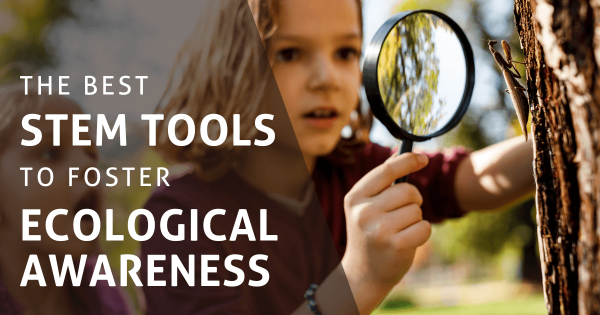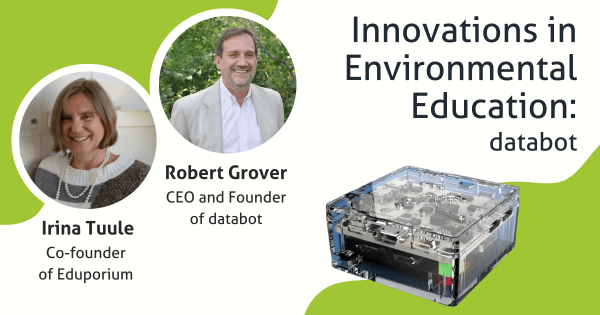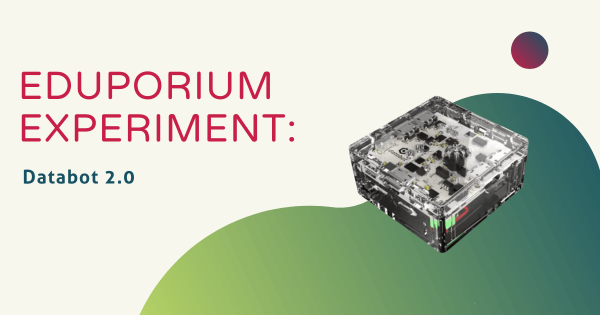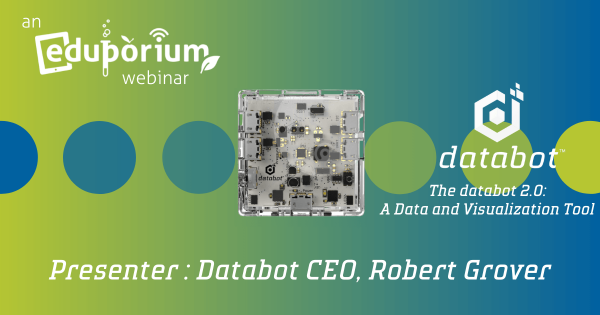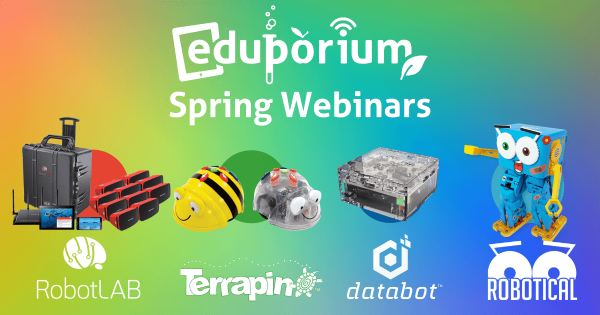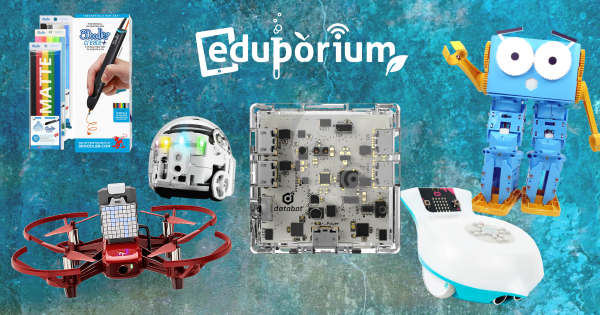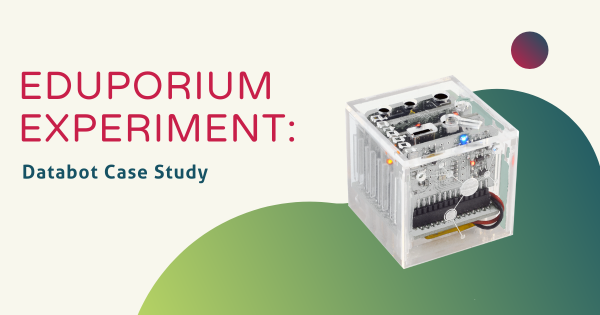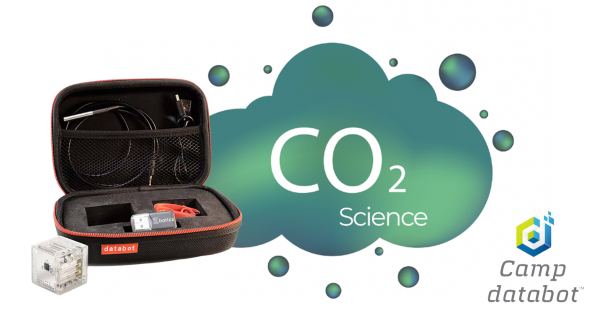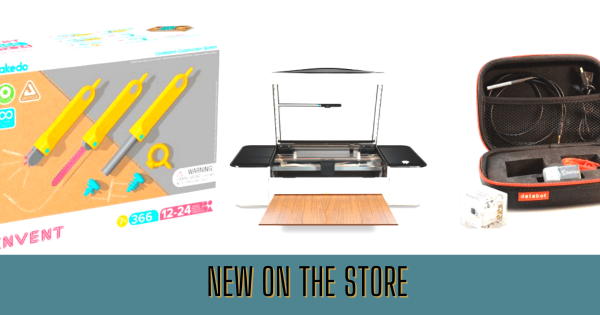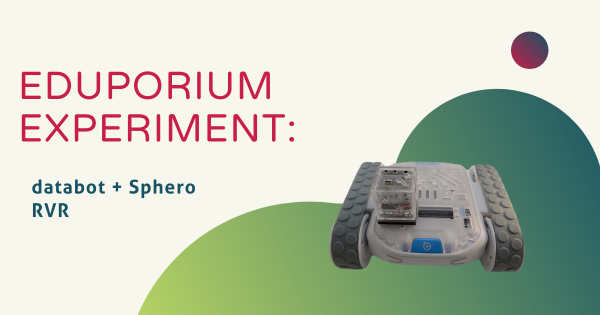Fostering environmental awareness in children could take many forms. We have identified some EdTech tools that truly help kids approach ecological learning from different perspectives. They can capture data from the world with robots, take their coding outside, use sustainable tools, and complete hands-on projects on renewable energy while expanding their eco literacy!
databot
One of the most unique educational technology tools, the databot 2.0 truly helps create unique learning opportunities. Compact enough for students to hold in their hands but powerful enough to transcend science-based learning, it has solidified itself among the best STEM tools. The databot 2.0 comes with 16 built-in sensors that students could use in projects. Among these are its accelerometer, a humidity sensor, a UV sensor, a sound sensor, a color sensor, and more. Not only can students collect authentic environmental data with the databot 2.0, they can then utilize it for enhancing their classroom experiments. On top of that, students can program the databot 2.0 and incorporate these features when using the dataBlockly environment. It's prefect for both middle and high school students and makes a great career and technical education tool as well.
With so much science packed into this little cube, the databot 2.0 and companion databot app create many STEM possibilities. Since the databot team is passionate about empowering students to visualize real data, they also created an app called Vizeey. Using the Vizeey app, students can stream and explore real-world data in real time, adding plenty of additional benefits to this tool. Plus, for STEM clubs or robotics programs, the databot 2.0 is also available in a twin pack or a 10-pack. It even comes with programmable RGB LEDs, machine learning applications, and drag-and-drop software with AI extensions. Students can pair these robots with their device using its BLE connectivity and use them for up to six hours. Explore some of our additional classroom content below and find all of these robotics kits on our store.
-
Innovations in Environmental Education: databot Webinar
As educators, how can we teach students to engage with challenges like climate change and environmental health? Our spring webinar series tackled these questions with one of our favorite environmental education tools: databot 2.0. In our model of Ecological Education, EdTech tools like databot are key to facilitating students’ appreciation of the environment. -
Eduporium Experiment | How To Use databot 2.0
Like the original databot Robot, the databot 2.0 is square in shape but it is not a perfect cube unlike that original model. The newer databot is shorter in height, making it a much more compact robotics tool. More importantly, it’s also outfitted with 16 powerful on-board sensors that students can use to measure anything from light levels to air -
Webinar: STEM, CTE, And Data Capture With The databot 2.0
Among other updates to the databot 2.0, it has a more powerful processor, a drag-and-drop coding platform, and some new links to machine learning. Robert gave a super informative overview of the databot 2.0 and we could definitely feel that excitement from the educators in attendance—many of whom immediately saw educational value in this data collection tool. -
Robotics, Coding, And VR: Our 2022 Webinar Replays
Throughout 2022, we’ve hosted an Eduporium webinar series and focused on some of the newer technologies we offer. In this series, we collaborated with a few of our manufacturer partners, who each certainly shared helpful insights on their classroom tech solutions. Head inside to learn more about four of our newer teacher tools for advancing STEM learning opportunities. -
6 Top EdTech Tools For Students In Grades 3-8
Whether you’re off researching the best robots for the classroom, focused more on teaching students about sensors, or looking to prep them for CTE programs, our list of middle school must-have STEAM tools offers children a whole lot. Head inside to learn more about why our team will consistently recommend these classroom STEM kits for kids in Grades 3–8. -
Eduporium Experiment | The databot In Remote Learning
While it’s not the environment we’d all want to be using the databot in, this post paints a prime picture of how the databot is adaptable in almost every learning situation! Keep on reading to learn more about how teachers have found success using this data-collecting bot in different learning scenarios and with their students of all different ages. -
The Camp databot CO2 Science Kit: STEM At Home Or School
We added the databot kits to our offerings just a few months back and this small, cube-shaped robot is certainly now a powerhouse when it comes to STEAM education—even in the remote variety. Using its on-board sensors, which include air pressure, altitude, CO2, and humidity sensors, the device is capable of collecting a whole lot of real-world information. -
Eduporium Weekly | What's New On Our Store?
Whether you’re looking for some new options for summer STEAM activities or actively on the hunt for some new classroom tools for once you’re able to get back, we pride ourselves on offering the largest variety of EdTech, STEM, and MakerEd tools all in one place. We’ve added new options from Sphero, MakeDo, Glowforge, and databot (among others). -
Eduporium Experiment | databot And The Sphero RVR
The databot is a small, programmable robot outfitted with an array of built-in sensors that are constantly capturing real-world data. Students can use this data to create programs for the small, cube-like databot to execute. It works with the Google Science Journal platform, but the databot Robot is also compatible with another powerful STEAM tool: the Sphero RVR!




